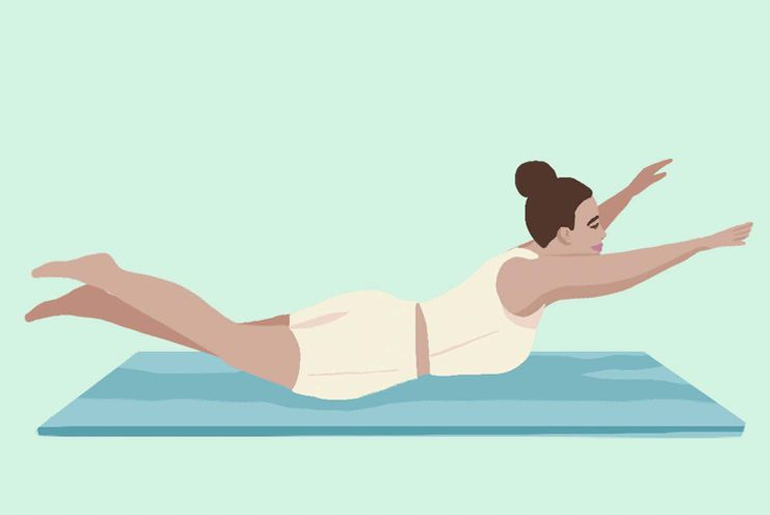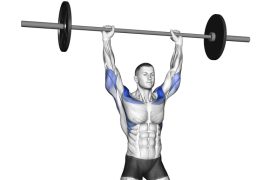Stress is an inevitable part of modern life, whether from work deadlines or family concerns. While relaxation techniques like yoga and journaling help, Pilates exercises offer an effective alternative. Unlike high-intensity workouts that may heighten nervous energy, Pilates emphasizes controlled movements and deep, mindful breathing. This deliberate approach strengthens the mind-body connection, redirecting focus away from anxious thoughts. Each stretch and strengthening exercise acts as a form of active meditation, promoting relaxation and mental clarity while enhancing physical well-being.
Pilates:
Pilates is a low-impact workout system developed by Joseph Pilates in the early 20th century, originally named Contrology. Rooted in the belief that mental and physical health are closely connected, Pilates exercises focuse on strengthening core muscles while enhancing flexibility, balance, and body awareness. It emphasizes controlled movements, proper alignment, breathwork, and mindful coordination. According to research in Muscles Ligaments Tendons, Pilates can be performed on a mat or using specialized equipment like the Reformer, Cadillac, or Wunda Chair. If you’re looking to reduce stress and anxiety, here are some beginner-friendly Pilates exercises to try.
How Pilates Helps with Stress and Anxiety Relief
Pilates exercises effectively reduce stress and anxiety by combining physical movement with mindful awareness. Its controlled, precise movements demand focused attention, redirecting the mind from anxious or racing thoughts and fostering a sense of presence. This mindfulness helps ground individuals in the present moment, reducing future-oriented worries. Additionally, Pilates emphasizes deep, diaphragmatic breathing, which activates the parasympathetic nervous system—our body’s natural relaxation response. According to a study in Complementary Therapies in Medicine, this process counteracts stress-induced effects like increased heart rate and muscle tension.
Moreover, Pilates alleviates physical tension, particularly in stress-prone areas such as the neck, shoulders, and back. By promoting stability and control both physically and emotionally, Pilates provides a structured and empowering approach to anxiety relief. Whether managing chronic stress or seeking preventative measures, Pilates exercises offer a safe and effective method for achieving instant relaxation and long-term resilience.
Pilates Exercises for Stress and Anxiety Relief:
Pilates exercises are mind-body exercise method that enhances flexibility, strengthens muscles, and promotes relaxation. It is particularly effective for reducing stress and anxiety, as it combines controlled movements with deep breathing. Pilates expert suggests the following 12 exercises to help calm the nervous system, release tension, and improve mental focus.
1. The Hundred: This classic Pilates exercises enhance circulation, engages the core, and encourages deep breathing. Lying on your back with knees bent and feet flat, you lift your head and shoulders slightly while extending your arms. You then pump your arms up and down, inhaling for five counts and exhaling for five counts, completing 100 pumps in total. The rhythmic breathing and steady movement help to calm the nervous system and reduce stress.
2. Roll-Up: The roll-up is an excellent exercise for spinal mobility and flexibility. Sitting with legs extended, you inhale to reach forward and exhale as you slowly roll down, vertebra by vertebra. This controlled movement not only strengthens the core but also releases tension held in the spine due to stress.
3. Single Leg Stretch: This movement is great for improving concentration and grounding the mind. Lying on your back, you bend one knee toward your chest while extending the other leg. You then switch legs in a controlled manner, keeping your core engaged. The focused motion helps in relieving stress and promotes mental clarity.
4. Double Leg Stretch: The double leg stretch enhances coordination and breathwork, both essential for mental focus. You lie on your back with knees bent, then extend both legs and arms before circling your arms back and bending your knees again. This movement requires concentration and promotes relaxation.
5. Shoulder Bridge: The shoulder bridge is ideal for relieving lower back tension and creating a sense of stability. Lying on your back with knees bent and feet flat, you lift your hips to create a straight line from shoulders to knees. Lowering slowly allows you to control your movement while strengthening the core and glutes, reducing stress-related tightness in the lower back.
6. Spine Stretch Forward: This stretch is particularly effective in releasing physical tension from the back and hamstrings. Sitting tall with legs extended, you inhale to lengthen the spine and exhale as you fold forward from the hips. The controlled stretching action helps to release stiffness accumulated due to stress.
7. Cat-Cow Stretch: A gentle spinal movement, the cat-cow stretch relieves tension and promotes relaxation. Starting on your hands and knees, you inhale to arch your back (cow pose) and exhale to round your spine (cat pose). This fluid motion helps release built-up stress and enhances spinal mobility.
8. Side Plank: The side plank helps create stability and strengthens the core while requiring focused concentration. Beginning in a plank position, you rotate to one side, supporting yourself on a forearm while keeping your body aligned. Holding this position engages muscles and promotes a sense of control, reducing mental stress.
9. Leg Pull Front: This exercise strengthens the core and back, improving posture and reducing stress-related tension. Sitting with legs extended, you place your hands behind you and lift your hips. Extending one leg at a time, you maintain balance and focus, which enhances body awareness and mental clarity.
10. Leg Pull Back: A great exercise for strengthening the glutes and hamstrings, the leg pull back begins in a plank position. You then lift one leg straight back, lower it, and repeat on the other side. This movement increases stability, improves posture, and helps release stress-related tension in the lower body.
11. Swan Dive Prep: This movement promotes a sense of openness in the chest and strengthens the back. Lying on your stomach with hands under your shoulders, you lift your chest slightly, engaging your back muscles. The gentle extension of the spine encourages deep breathing, helping reduce anxiety and promote relaxation.
12. Seated Spinal Twist: The seated spinal twist is a calming exercise that releases tension in the spine and encourages relaxation. Sitting tall with legs extended or crossed, you twist your torso, using your hands for support. This movement enhances spinal flexibility and promotes mindfulness, which is essential for stress relief.
These Pilates exercises not only strengthen and stretch the body but also focus on deep breathing and mindfulness, making them effective tools for managing stress and anxiety. By incorporating these movements into your routine, you can cultivate a greater sense of calm, improve mental focus, and reduce tension in the body.
Short Side Effects of Doing Pilates Exercises:
- Muscle Soreness – Common in beginners due to core and muscle engagement.
- Fatigue – Temporary tiredness as the body adapts to new movements.
- Joint or Back Discomfort – Can occur with improper form or posture.
- Dizziness – May result from incorrect breathing or rapid movements.
- Emotional Sensitivity – Deep breathing and mindfulness may trigger emotions.
Tip: To avoid discomfort, maintain proper form, hydrate, and consult a professional if needed.
Disclaimer:
The information contained in this article is for educational and informational purposes only and is not intended as a health advice. We would ask you to consult a qualified professional or medical expert to gain additional knowledge before you choose to consume any product or perform any exercise.








